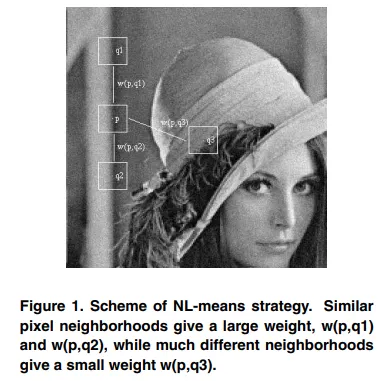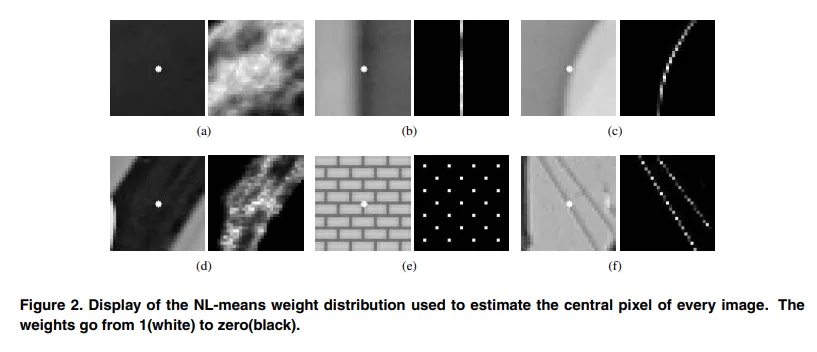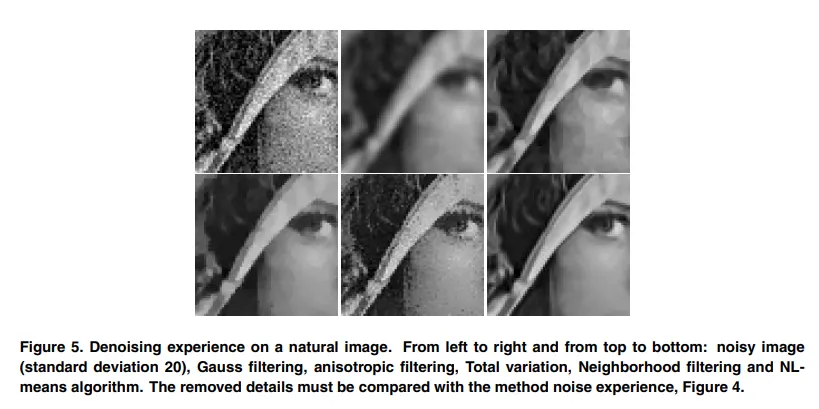The paper introduces Non-local Mean (NLM) algorithm to deal with additive noise on image such as Additive White Gaussian Noise (AWGN). The uses a fixed patch size of 7*7 to apply the NLM algorithm, and compared results with other denoising algorithms based on the Method Noise.
NLM Algorithm
Non-local mean is to calculate the family of weights for each pixel with respect to the target pixel to denoise. The weight is determined based on the similarity of the intensity gray level vectors extracted from the neighbor patches(square) of two pixels. Similarity is calculated as the Euclidean distance between the two vectors. Then the weight is calculated by the gaussian function and then normalized ( is for normalizing). Note that the weight has a parameter that controls the degree of the filtering.
Paper claims that NLM helps comparing geometrical features of the two neighbor patches. Also the paper gives theoretical issues how NLM can denoise the image through Conditional Expectation Theorem. Simply speaking, it means that since comparing two patches leads to conditional expectation of contribution, for stationary cases there would be more patches that is similar that can help to denoise the target.
Method Noise
The idea of the method noise is that the denoising algorithm applied to the ground turth image should not be altered. Denoising algorithm with less method noise will be good at preserving original details of the image and avoid smoothing and over-blurring. Paper uses this approach to show how NLM is better in preserving original details compared to other methods.
Results
This figure shows the weight of each pixels of the right of the pair to denoise the white pixel from the left of the pair. Weight is calculated through NLM method. This shows that the NLM is capable of preserving edges (b, c, f) and finding similar patterns (d, e).
The figure shows how NLM is capable to reconstruct the noisy image while perserving original texture compared to other methods.
The figure is showing the method noise of each denoising methods along with NLM (the bottom right). Plotted method noise of other denoising methods have edges and high frequency details which means that the original details from the input are lost. However the NLM shows gray noisy method noise, which means that it is capable to denoise the image with loosing details.
Conclusion
This paper is old, but is one of the widely-used denoising method which current denoising studies are focusing. The idea is quite similar to the DL based denoisers that predicts the kernel. It might be great to apply various size of patches for various frequency details and to let the FC layers decide the similarity. I will try to study other traditional denoising methods and also look at some paper the applied NLM to MC denoising.





